A Hampshire home is invaded by bamboo from neighbour's garden, costing over £100k in repairs
'the worst case of bamboo encroachment ever seen in the UK'

Lauren Bradbury
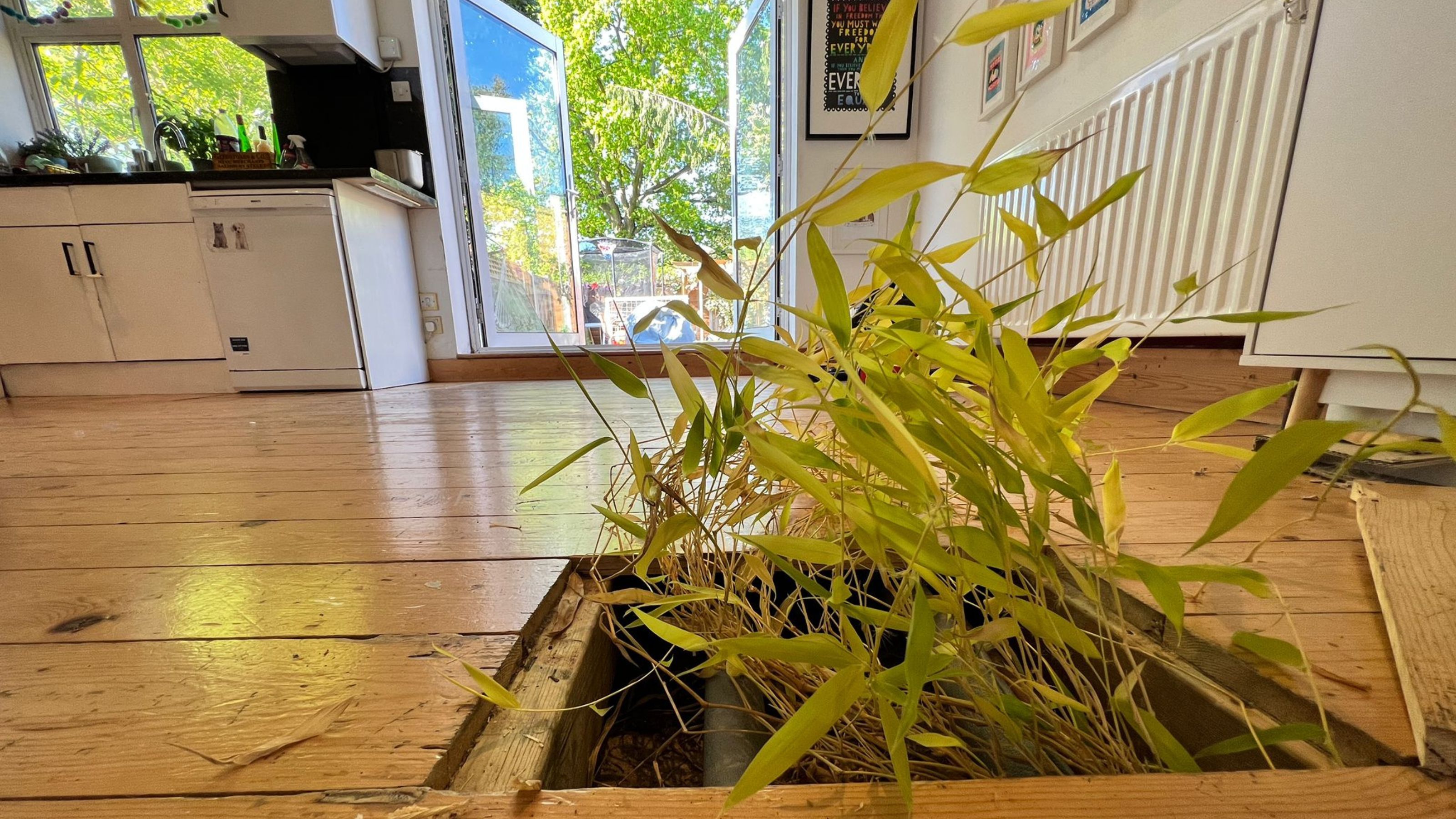
If you had £100,000 to spend on your home, there’s a high chance that you’d use it to extend your home, remodel every single room, or just pay off a huge chunk of your mortgage. But one homeowner didn’t have that privilege. Instead, they had to spend £100,000 on repairs after bamboo invaded their Hampshire home.
In theory, bamboo is a beautiful and unique addition to any garden. Its tropical aesthetic can add visual intrigue, its luscious foliage can serve as the perfect garden screening idea, and its fast-growing nature makes it perfect for blocking out the neighbours.
But in this instance, their neighbours’ decision to plant this invasive species cost them a fortune in repairs. Now, experts are warning homeowners about invasive bamboo and urging them to understand what to do if you have invasive bamboo.
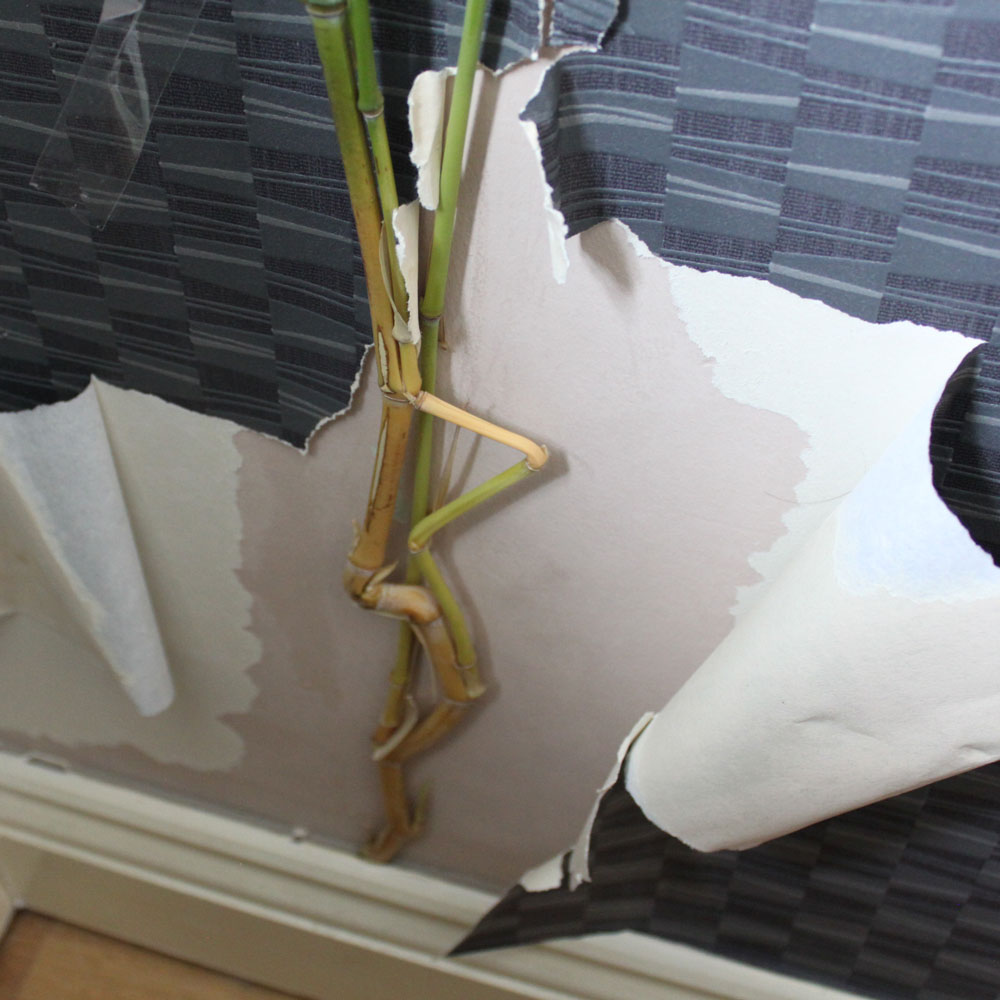
Bamboo found beneath the wallpaper of the Hampshire home
Hampshire home invaded by bamboo
Yes, a four-bedroom house in Hampshire estimated to be worth between £650,000 to £700,000 was invaded by bamboo from a neighbouring property in 2019. The invasive plant grew underground and eventually popped up in the living room, study, hall, and kitchen – resulting in over £100k in repairs and forcing the family out of their home in the process.
However, the homeowner didn’t plant the bamboo in their own garden. Instead, the bamboo originally formed part of a garden edging idea in a neighbour's garden and had been planted directly into the ground to form a screen.
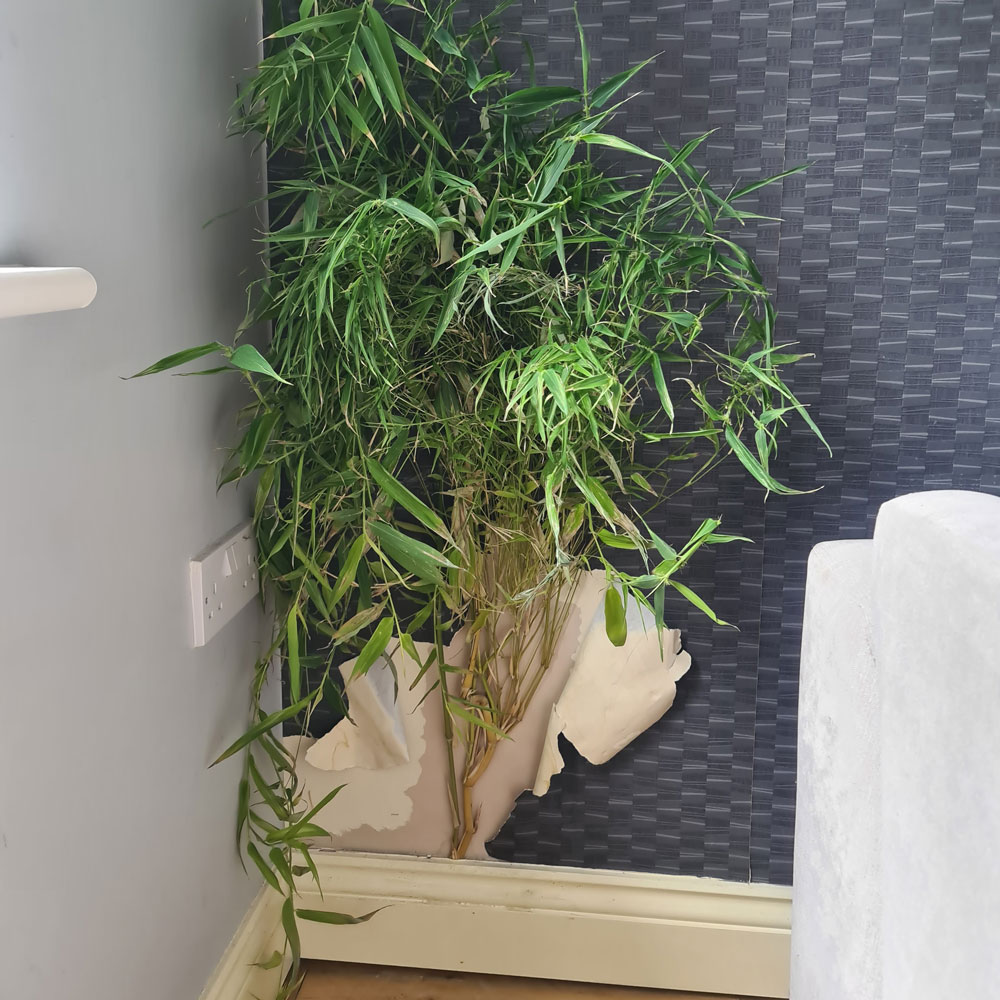
The bamboo had grown to impressive heights in the Hampshire home
And while you might think that this is a rare occurrence, experts agree that it’s more common than you’d think. In fact, a YouGov survey undertaken in March 2024 and commissioned by Environet found that ‘8% of homes in the UK have bamboo growing on their property’ and ‘3% of people have experienced bamboo spreading across their property boundary.’
Unbeknownst to them, the bamboo had grown outside their neighbours’ property boundary and was growing quietly below the surface of their house. Soon enough, a vast network of rhizomes began to develop, and underground plant stems eventually burst through the concrete floor.
Sign up to our newsletter for style inspiration, real homes, project and garden advice and shopping know-how
Specialists even found that the bamboo had begun to grow up through the cavity walls. As a result, many of the interior walls had to be demolished as hundreds of meters of bamboo rhizomes were removed.
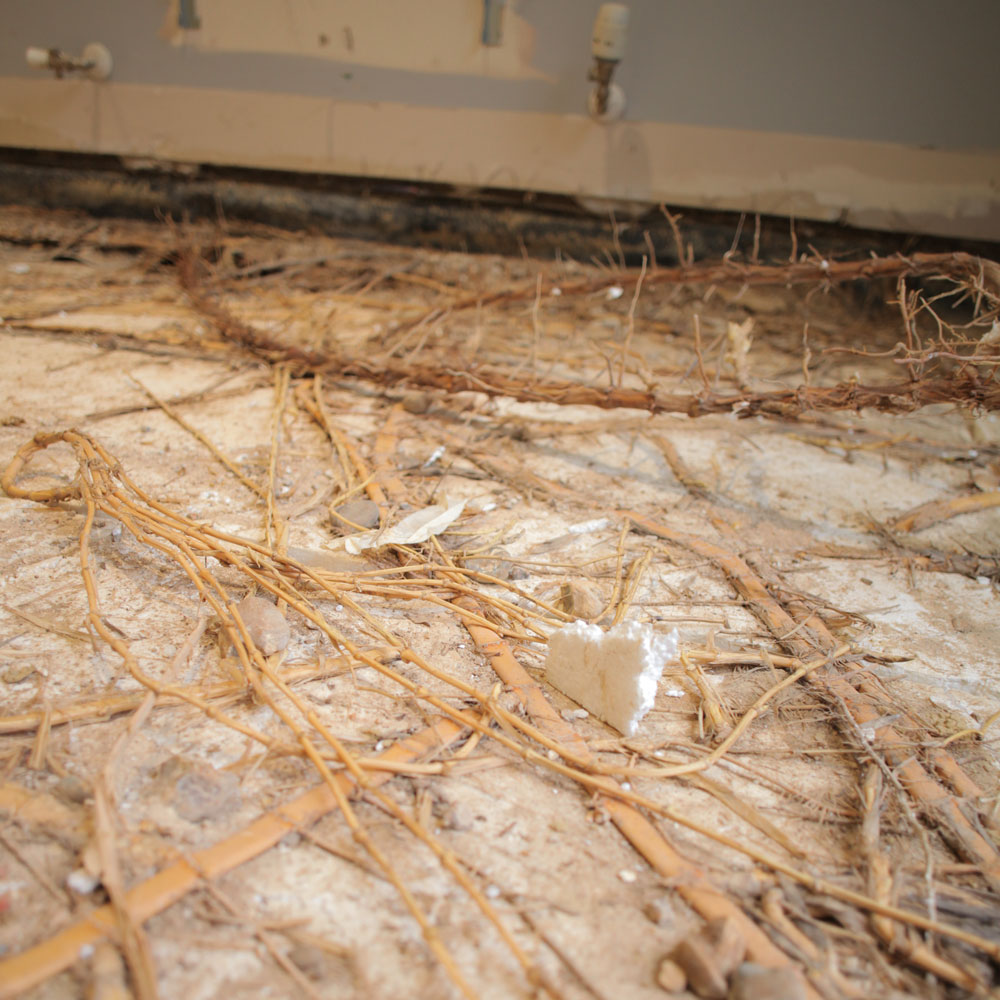
‘This is the worst case of bamboo encroachment and damage to property I’ve ever seen in this country,’ says Nic Seal, founder of Environet UK. He explains that the homeowners suffered a huge financial cost. Plus, they had to vacate their home for several months.
After all, the only efficient way to stop bamboo from spreading when it’s already taken over a house is to dig it up and remove it manually. This is because 'running' varieties of bamboo form lateral shoots that can travel over 10 metres.
Their ability to penetrate brickwork, drains, cavity walls and patios means they can cause more damage than Japanese knotweed, which is well known for devaluing houses if found nearby.
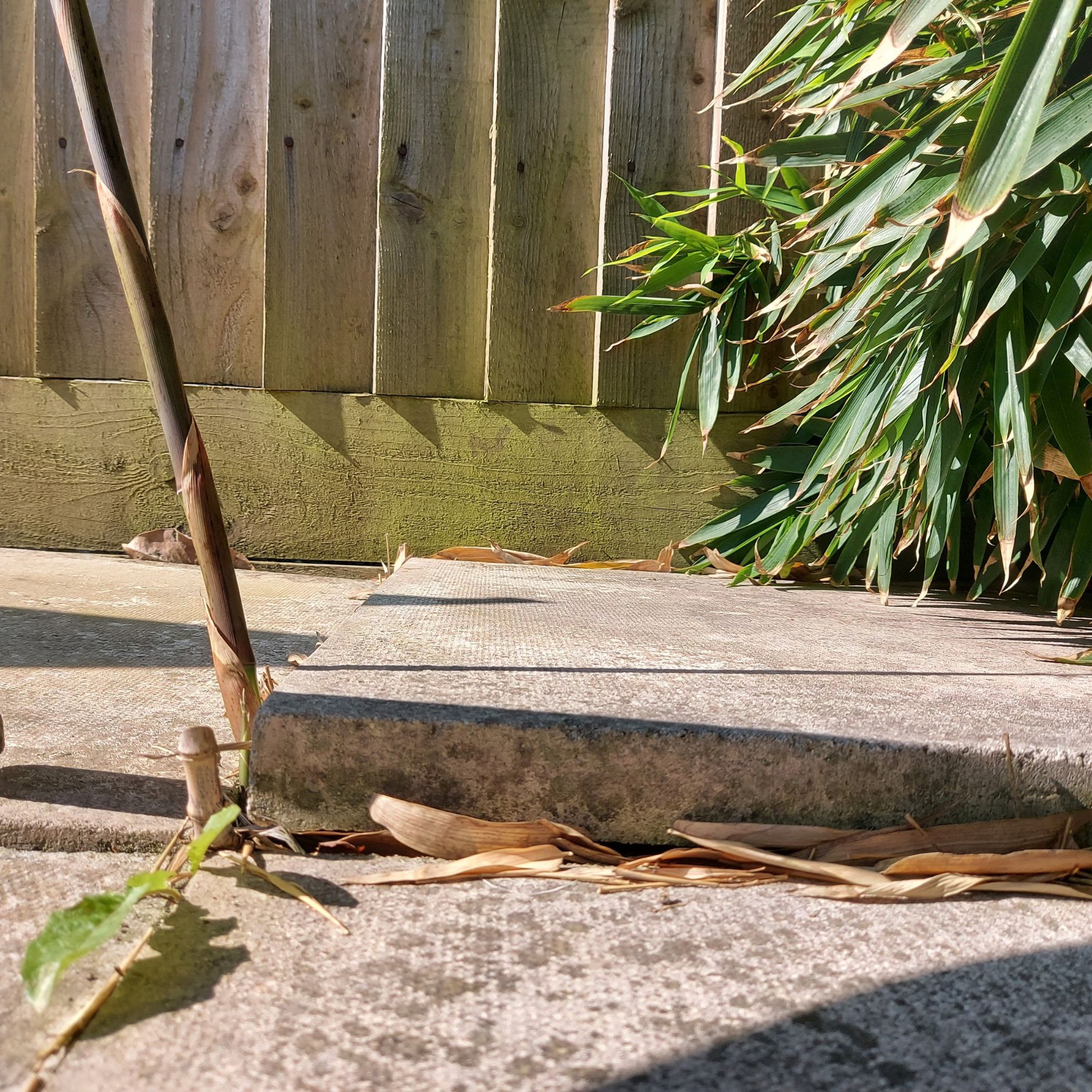
As a result, the entire ground floor of the Hampshire house had to be dug up in order to excavate the hundreds of metres of bamboo runners underneath, and it took experts weeks to ensure that every inch of bamboo rhizome had been removed to prevent further invasion.
Thankfully, their insurance company agreed to cover the costs of the repairs, but this home invasion still serves as a warning to those who have bamboo in their garden - or those who are looking to add bamboo to their garden.
'I would urge anyone considering planting bamboo to think twice,' comments Nic. 'And if you already have it growing in your garden, take action now to ensure it’s properly contained.’
The easiest way to stop bamboo from spreading in your garden is by choosing a clumping variety instead of a running variety. For example, this Fargesia Rufa Clumping Bamboo from B&Q should remain relatively contained - especially if left in a pot.
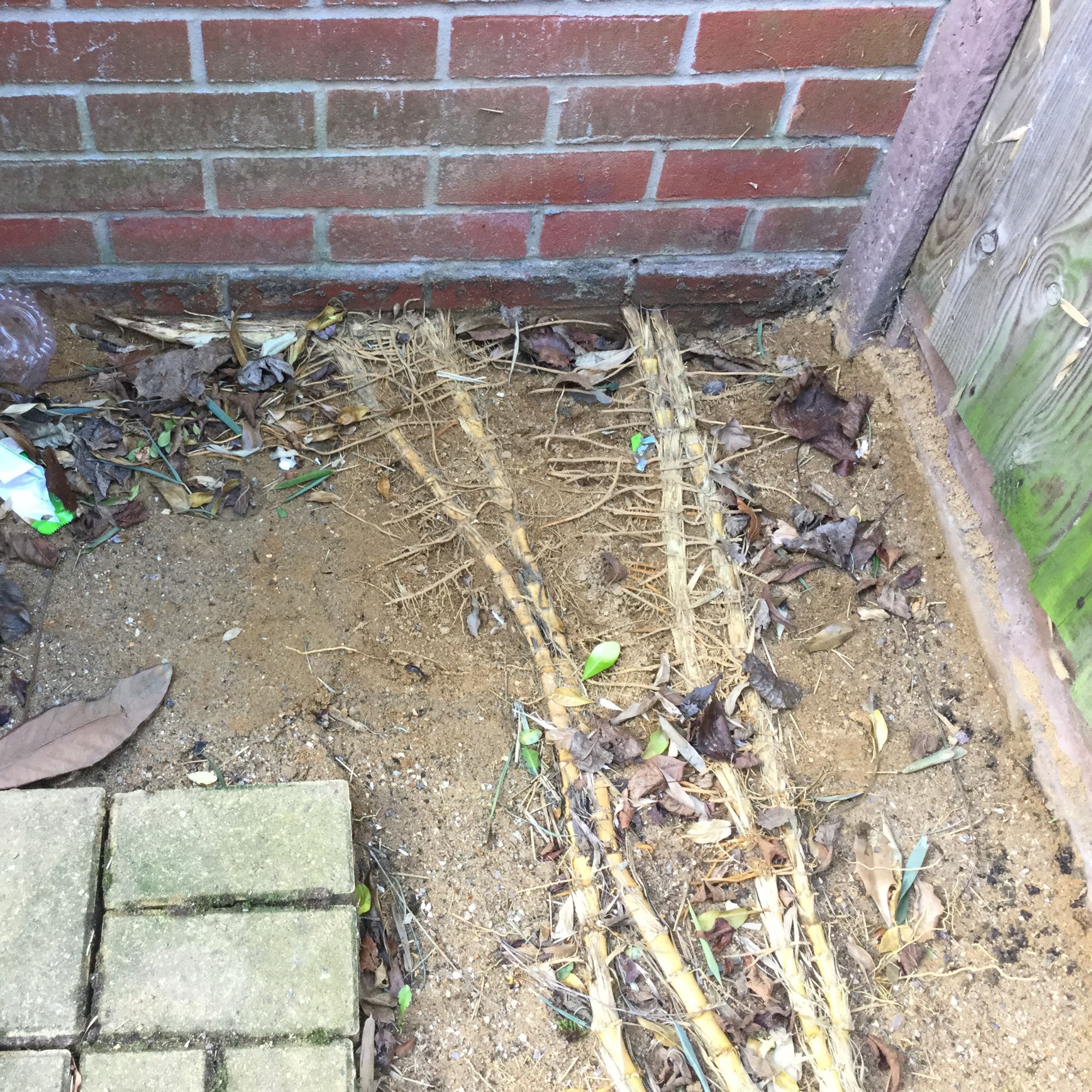
In fact, you should always plant bamboo in a container or a strong pot, no matter whether you buy a clumping or running variety. This will keep the roots contained, and using a bamboo barrier like this Todds Bamboo Root Barrier from Amazon should also provide further protection from invasion.
As well as buying the right type of bamboo and planting it in a pot, you'll need to take steps to maintain it.
It's a good idea to prune your bamboo hard and regularly, at least every spring. But if you’re worried about the potentially invasive nature of the bamboo in your garden, we’d suggest removing it completely.
Especially if you want to avoid a hefty repair bill like this one.

Millie Hurst was Senior Content Editor at Ideal Home from 2020-2022, and is now Section Editor at Homes & Gardens. Before stepping into the world of interiors, she worked as a Senior SEO Editor for News UK in both London and New York. You can usually find her looking up trending terms and finding real-life budget makeovers our readers love. Millie came up with the website's daily dupes article which gives readers ways to curate a stylish home for less.
- Lauren BradburyContent Editor (House Manual)